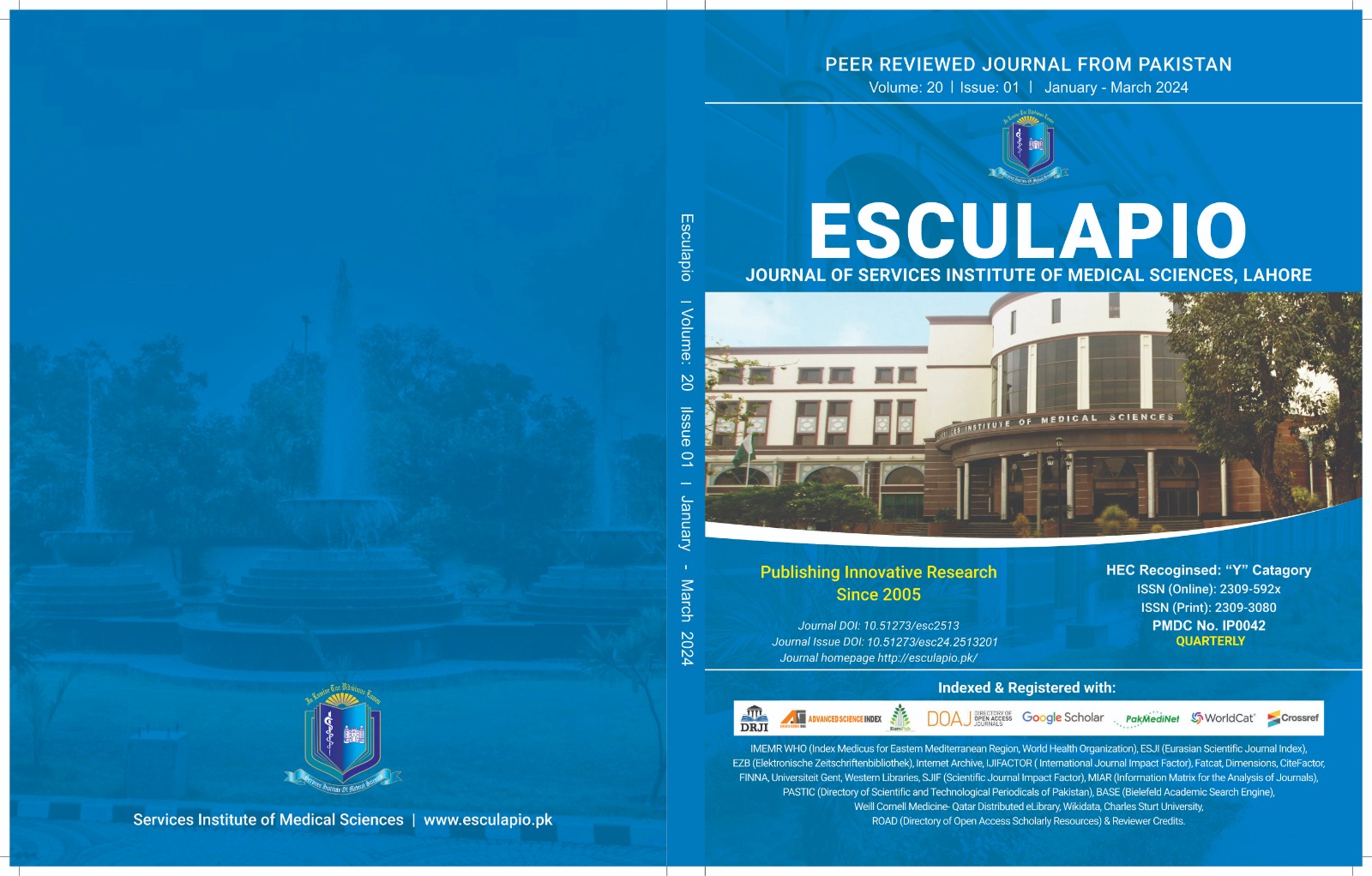ACL Reconstruction with Peroneus Longus Autograft Using Endobutton & Bioabsorbable Interference Screw and Brace Free Rehabilitation
DOI:
https://doi.org/10.51273/esc24.251320110Keywords:
Anterior cruciate ligament, ACL Reconstruction, Peroneus longusAbstract
Objective: To assess the functional outcome of arthroscopic anterior cruciate ligament (ACL) reconstruction with Peroneus longus tendon autografts using endobutton and interference screw at one-year follow-up post- operatively and brace-free rehabilitation.
Material and Methods: A prospective study included 53 patients with clinical and radiological ACL deficiency. Arthroscopic ACL reconstruction was performed using Peroneus Longus double bundle autografts with sub- sequent brace-free rehabilitation. Pre- and postoperative assessment at one-year follow-up utilized the International Knee Documentation Committee (IKDC) score. Graft length and diameter were measured perioperatively, and donor site morbidity was evaluated using The American Orthopedic Foot and Ankle Score (AOFAS).
Results: The study included 51 (94.4%) males and 2 (3.7%) females, mean age 27.3±7.2 years. Majority were left-sided procedures (64.8%). Peroneus Longus graft mean length and diameter were 116.8±5.3mm and 8.2±0.2mm respectively. At one-year follow-up, ankle joint movement at the graft site was preserved (mean AOFAS 98±0.8). There was a significant improvement in IKDC score postoperatively (p < 0.05).
Conclusions: ACL reconstruction with Peroneus longus autograft offers knee stability and facilitates early rehabilitation. Utilizing endobutton and bioabsorbable interference screw fixation supports graft strength until sufficient graft-to-bone healing occurs. Patients regain pre-injury activity levels, including stair climbing, sitting cross-legged, and squatting without difficulty.
Downloads
Published
How to Cite
Issue
Section
License
Copyright (c) 2024 Esculapio Journal of SIMS

This work is licensed under a Creative Commons Attribution-NonCommercial-ShareAlike 4.0 International License.










